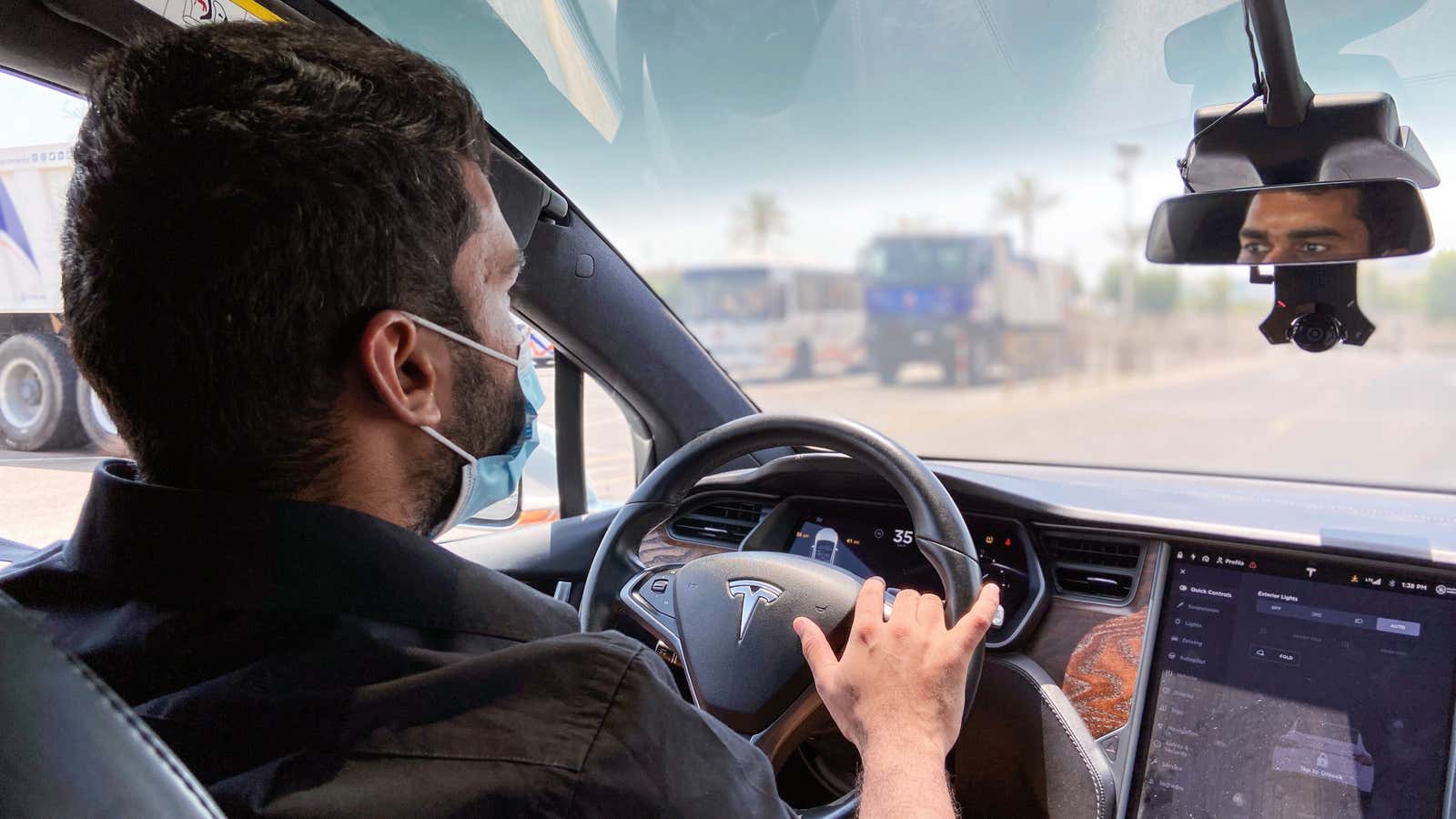Tesla is getting ready to roll out a software upgrade that will allow a select few drivers to use more autonomous driving features in cities. Up to now, the beta versions of driver assistance software made available to thousands of drivers in the US have been designed for the relatively more simple environment of highways. Computer-assisted urban driving would bring Tesla a step closer to CEO Elon Musk’s vision of fully self-driving vehicles. But safety officials think the company is getting ahead of itself, and putting drivers at risk.
“Basic safety issues have to be addressed before they’re then expanding it to other city streets and other areas,” Jennifer Homendy, chair of the National Transportation Safety Board, a federal agency that investigates transportation accidents, said in a Sept. 19 interview with The Wall Street Journal. Even the name of Tesla’s software—”Full Self-Driving Capability”—is “misleading and irresponsible,” she said, because it implies that vehicles equipped with it are capable of driving safely with zero human engagement. In fact, the software is merely a driving aid and is meant to be used with a driver’s hands still on the wheel. Tesla didn’t respond to the WSJ’s request for comment.
Are self-driving vehicles safe?
In a Sept. 18 tweet, Musk said about 2,000 drivers have been operating earlier versions of the self-driving software for nearly a year with no accidents, and that the safety record “needs to stay that way.” In addition to working in cities, the software will also become available to more Tesla drivers as early as this month, if their car records good driving behavior.
But Homendy and other officials think Tesla still hasn’t fully been held accountable for earlier fatal crashes with drivers using self-driving software. That includes a fatal one in 2016 in Ohio, another fatality in 2019 in California, and a string of non-fatal crashes nationwide since 2018 that are currently under investigation. Despite the deaths, Tesla ignored safety recommendations proposed by Homendy’s agency in 2017, and now seems intent on moving forward with a technology that Wall Street analysts have cited as key to the company’s value and that will cost drivers $10,000 or a monthly subscription of $199.
